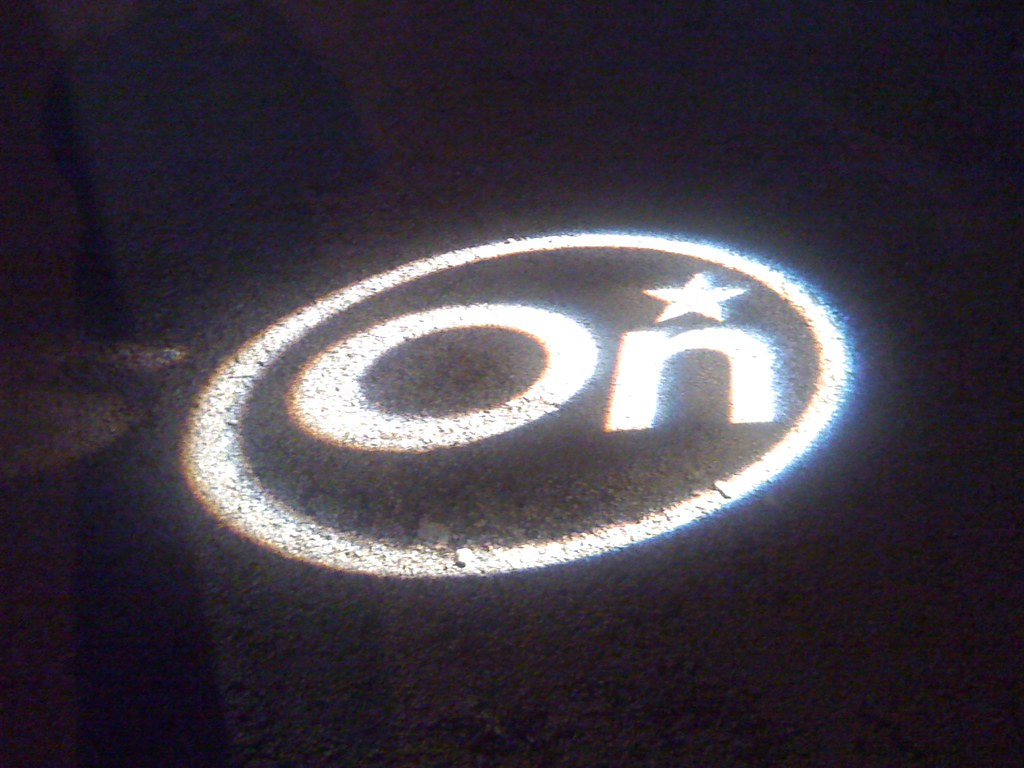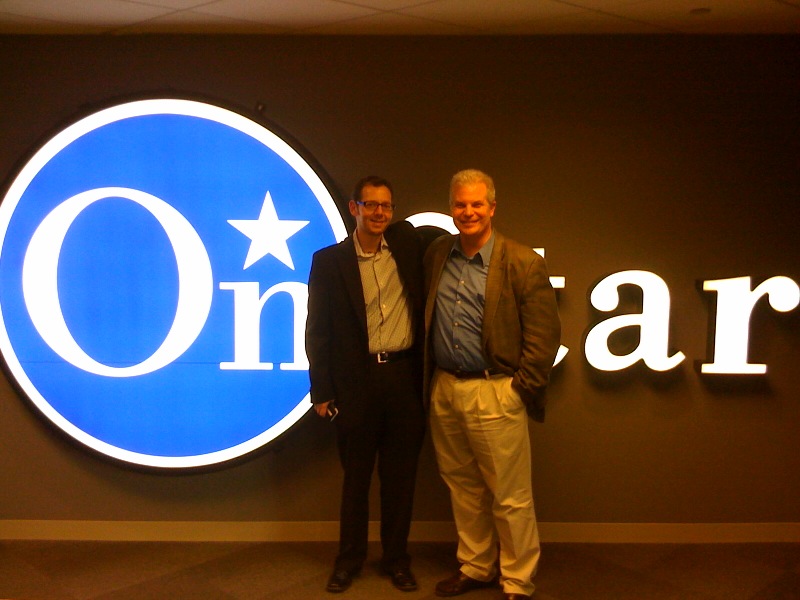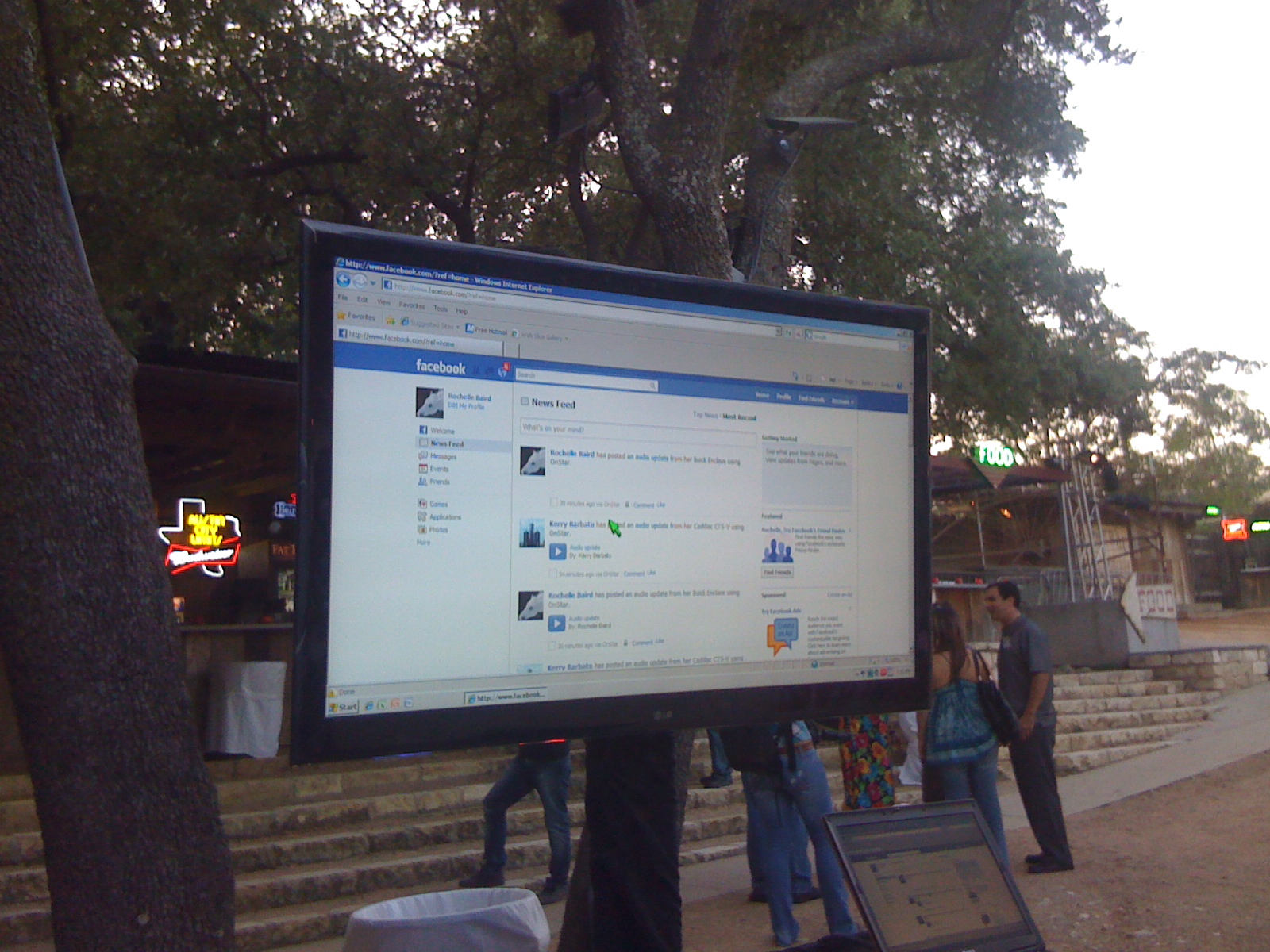Here is the transcript (as verbatim as Bryan and I could muster)...
Aaron Strout:
I’d like to introduce today’s special guest. I have Jason Calacanis. Jason is the founder and CEO of Mahalo. Jason, we met recently at the
Milken Conference, and I follow you on Twitter . You actually follow quite a few folks on Twitter. Thank you for joining us today.
Jason Calacanis:
My pleasure.
Aaron Strout:
So Jason, tell us a little bit about how you got started. I’ve read some of your history, and I know you’ve spent some time at AOL back in the day. You founded Mahalo. Can you talk about sort of your past a little bit and what prompted you to go this direction?
Jason Calacanis:
Sure. Well, I started as a technical person in the pre-Internet days doing local area networks and whatnot, but I won't bore you with all that. I was an IT guy, basically. And then in the early 90s I started getting into the Internet, launched a magazine in ’95-‘96 timeframe about the Internet. It was called Silicon Alley Reporter, and I covered the Internet scene in New York. And that grew really big, and I got to meet all the big CEOs and interviewed them and learned a heck of a lot. And that was great.
Just being a journalist, you should learn a ton. And just sat with CEOs who were building Internet companies, taking them public, etc., people like Mark Cuban or Scott Kurnit from About.com or Jeff Dachis from Razorfish, Sergey [Brin] from Google. I mean, I met all these guys when they had no people or 10 people, 20 people at their companies. So I learned a lot and then wound up selling that company to Dow Jones and starting Weblogs, Inc., which is a blogging company.
And after about 18 months of running that, we sold it to American Online; spent a year at American Online; redid Netscape and made it into a social news site which is called
Propeller, which is sort of like Digg but with moderators and more sort of political and news based than tech based.
And then after my year at AOL, I decided I wanted to start a search engine called Mahalo, which is a human-powered search engine. You can go see it at Mahalo.com – M-A-H-A-L-O, which is Hawaiian for “thank you.” And we’re just coming up on our one-year anniversary. And we have 4 million people coming to the site every month, and it’s doing really well.
Aaron Strout:
Well, it’s a very cool site, so I would strongly encourage anyone that hasn’t looked at it to check it out. I do have a question about AOL. And not to talk trash at all, but will they make it? They seem to sort of change [inaudible] wind a lot, and most recently bought one of the larger social networks out there. They’ve done a lot to try to reinvent themselves and obviously have been dealt some strange blows. But give me your insider knowledge there. What do you see in the future for them?
Jason Calacanis:
My knowledge isn’t so insider, to be honest. The only thing I can really say about it is the brand, AOL.com – American Online, the AOL brand – I think will probably not exist for much longer, and that’s just based on an outside view. Which is, they are spending on their advertising into this Platform A business and advertising networks – sort of the flavor of the month or the year.
And so, the rumor has been they're going to spin that out into its own company, and I guess that might be true. So if that is the case, I think what you’ll see is … they’ll be less of a focus on AOL at AOL. It’ll just be Platform A. And so, I don’t know how long the brand will be around, as we know it, which is kind of sad in some ways. But, you know, life goes on. Excite and Lycos don’t exist anymore, and they were part of – AltaVista doesn’t exist anymore; Broadcast.com doesn’t exist anymore; eGroups doesn’t exist anymore. A lot of brands go away and it’s sad when a brand goes away, but I would bet the AOL brand won't exist in five years.
Aaron Strout:
To that end, you among several other folks have been vocal about the whole Yahoo!-Microsoft thing, and I believe you Tweeted an update today about some of the latest and greatest. What do you think is going to happen there?
Jason Calacanis:
That’s a crazy situation. I thought for sure that the deal was going to get done, and I think that Jerry Yang and his team did a phenomenal job of scaring Microsoft off. And I don’t know if that was in the best interest of Yahoo! shareholders. I think Yahoo! shareholders are kind of pissed off. So … yeah, it’s not a good situation for Yahoo! Shareholders, and I don’t even know if it’s in the best interest of the Yahoo! management.
One of the things is business is very personal, and I think what they're looking at is – what is there goal? And their goal, in fact, might be not similar to what typical shareholders’ goals are, which is to maximize their return. I think for Jerry Yang it’s very personal. I think he loves Yahoo! and for him, making an extra billion dollars or two billion dollars selling it now versus holding onto it and selling a couple of hundred million dollars worth of stock every couple of years and having an incredible lifestyle and owning his company and running his own show is more important to him.
And so, it’s really just this massive test case in when an individual’s concern is divergent from the shareholders’ concern or some portion of shareholders’ concern. I love Jerry Yang. I think he’s a brilliant guy, and I respect him for being an entrepreneur like this and wanting to do his own thing. You’ve got to respect the shareholders and Microsoft for giving them such a huge payday. So it really is an epic battle.
My guess is there's going to be so many lawsuits and distractions for Yahoo! that the deals gonna wind up getting done. However, Microsoft might just be so pissed off at this point, they might just be like, “You know what? This is not worth the effort. Let’s just go buy 50 companies and get those 50 CEOs in here, try to keep 10 of them. And if we keep 10 of them and they're brilliant, we’ll be fine.”
Aaron Strout:
So, shifting back to you guys. You’ve done an interesting experiment recently where you're looking for a new host and you're doing it – I believe I've read about it and sort of poked my head around a little bit – American Idol style. So, it’s these two concepts of using community to sort of figure out who you talent is gonna be. Can you talk a little bit about that?
Jason Calacanis:
Yeah. We started a search for the new host of
Mahalo Daily. Mahalo Daily is a video show about Mahalo and about the topics we cover. So they might cover capoeira – which is a Brazilian martial arts show – which is what we did today. They might do something Internety, like cover the guy who sings “
Chocolate Rain” and interview him on the show – you know internet phenomenon.
So, it’s a range of topics, from entertainment to technology to lifestyle to how to fly a plan or how to ask a girl – how to flirt, we did one. So, it’s just sort of funny entertainment episodes that then might bring you back to content that you like on Mahalo. And what I would say is – you know, we lost our host. She was commuting down here from San Francisco, and she wanted to work more in video games and technology.
So we had to find a new host. So instead of just picking somebody, we decided we’d let the audience participate and we did an open casting call. We had 75 or 100 people show up; got it down to 20; had them do a read in front of some judges; got from 20 to 12; had the 12 go out and do man-on-the-street kind of interviews; and then we narrowed it down from 12 to 6; and now we have 6 each producing their own episode, and we’re going to let the audience debate it and talk about it. And so – so far, so great. It’s going really well.
Aaron Strout:
Now, what happens if they pick someone that – obviously I don’t think anyone’s going to be a disaster if they’ve gotten this far. But it’s this whole dilemma that a lot of companies that are trying to use these idea catchers, or some sort of –
Jason Calacanis:
Well, I have final veto rights. I’m taking input from everybody. But yeah, there's going to be no Sanjiya [former American Idol contestant] in this formula, or whoever the guy was that was the worst.
Aaron Strout:
That was Sanjiya. I loved the fact –
Jason Calacanis:
Oh, Sanjiya.
Aaron Strout:
Yep, it was Sanjiya. So one of the other reasons why I was really intrigued by doing a podcast with you is during the Milken Institute Conference, where I sat in on your – “this is the new way of doing PR.” You sat in with some other folks that were talking about it. You’re incredibly irreverent, but what I liked about it is that you really sort of rang true and you weren’t saying things that I didn’t necessarily agree with.
And so, one of them was how involved the CEO should be in the day-to-day blogging and Twittering. And I’ve had the privilege today, actually, of talking to two CEOs, one who blogs at a company called EDR and one who Twitters –
Tony [Hsieh] at Zappos. Talk a little bit about that and why it’s so important, because I think you made some excellent points when you were delivering your message.
Jason Calacanis:
It’s pretty clear that a CEO of a company – a lot of energy gets focused on that position, for better and worse. Steve Jobs, Bill Gates, now [Steve] Balmer. You know the CEO position, a lot of energy gets focused on it. And so what happens is if the CEO is not a public CEO, if they're not out there – when I say “public,” [I mean] not publicly traded but just publicly facing – it’s not good on the company, because they lose that opportunity to have a direct dialogue and discussion with their users.
I always encourage CEOs to Twitter and to have a Facebook page, to have a blog, even a video show and communicate with their audience. If you communicate with your audience, then they're going to, I think, consider your project a lot more. And they're going to think about your project a lot more, and they're going to become mavens and people who really you know promote your product.
And so, if you don’t do it, then another set of things happens, which is … compared to the people who do do it, not only do you miss the opportunity of bonding with these evangelists and getting direct feedback, [but] you also put up the perception that maybe you're scared or maybe you’ve got something to hide or maybe you're a dweeb and you're not cool and you don’t get it.
And so, when you see something like JetBlue had all their problems, you know David Neeleman was on TV immediately talking about, “Yeah, we screwed up. We suck. We’ve got a bill of rights.” Boom. That saved the company, you know? Another type of company could have just bailed on that. Name the CEOs of any other airlines and the only one you're gonna come up with is probably Richard Branson, who owns Virgin, who again, is an über available, puts-himself -out-there kind of guy. Now, I don’t know if he blogs, but …
Then you look at Steve Jobs. Not only does he blog, but he has a video show and the video show is called “keynotes.” Every 6 to 12 weeks he has one. And that’s his own TV show and people tune into it. And they go directly to Apple’s website to watch it. He gets millions of people who watch that keynote. I mean he – think about that. It’s an hour-long commercial for his products, and he gets millions of people to watch it now. It’s pretty astounding.
Aaron Strout:
Yeah, if we could all be in that position, it could be nice. So you’ve given us one really important nugget, which is why you're a CEO or at least very senior level positions, really should consider being naked and transparent and out there communicating. Any other words of advice? You’ve certainly lived, breathed community and social media for a while. What else could a company that’s just sort of getting its feet wet? What should they be doing? What should they be thinking about?
Jason Calacanis:
Well, I think that not everybody can just jump into the deep end of the pool. A lot of companies have built up firewalls between themselves and their customers, and what happens, then, is some of the toughest issues in the business are sort of trapped in that firewall. And so, think about what are the three things people hate about you most. You know I know those three things people hate about me most.
I know the 10 things that people hate about our product most. And not only that, I talk about those a lot. So at first glance, it’s like, “You’re talking about why people hate you, and why people hate your product.” Well, you know what? It’s kind of freeing. If you know why they hate you, you can at least deal with it. And so, the things people hate most about Mahalo is when they get to a page and we haven't done it. That’s the worst thing.
And the second worst thing is when they get to a page and we have an error, a mistake, a bad link, or a factual error or something. So knowing that, it’s OK. We have to do a really good job communicating to people that it’s going to take five years to build this product out and it’s not meant to have every single word. And errors, we let them know that we’re human, and it’s your job to tell us when we have an error so that we can make it better. And that’s how Wikipedia was built and other things were built.
Basically, if you're going to jump into this end of the pool, you have to realize – and it’s not really a pool; it’s like jumping off a boat in the middle of the ocean. You know there could be dangerous things in the water and you better deal with them and understand that they’re a dangerous thing. So if you understand that you have this massive hatred toward you and it’s like a giant great white shark, you might not want to jump into the water just yet. You might want to have a cage.
And in this metaphor, the cage might be maybe only have comments show up after you’ve approved them so that you don’t just get slaughtered the second you jump in the water. Or you may want to start by doing a blog that maybe is not about the entire company but an aspect of the company. So the example would be if people were kind of pissed off at Dell because of customer service, I wouldn’t suggest they start a customer service blog as their first blog.
But they could start a blog about gaming machines, and here are the people that work at the gaming center at Dell. Here they are talking about the latest video cards and the gaming computers they're making. And then people get used to it, and the company gets used to it. And then you’ll launch your next blog, and your next blog. And here’s a blog about the HR department and people talking about what it’s like to work at Dell and the HR department talking about what they look for in employees and how great it is to be here and interviewing people in the staff.
So, there are ways to sort of dip your toe and not jump into the middle of the shark pit. And, let me tell you something: The blogosphere and the internet – there’s a lot of sharks out there. And if you try to BS people, you might get slaughtered. And so, a lot of that being on message and controlling the message stuff that PR people do – and they control the press and what the press can ask you during an interview and they can withhold access – that stuff doesn’t exist on the Web, so you're basically going to get your bell rung if you try to enforce those kind of controls.
So you basically have to say, “OK, I’m going to be swimming with sharks; I have to be a shark. If somebody comes up to bite me, I have to be able to bite back. I have to be able to hold my own.” And, you know what? A lot of these CEOs, in terms of communication skills, they’re guppies. They're just going to get slaughtered.
Aaron Strout:
So, I have two final questions for you. Great advice, by the way. You follow a lot of people on Twitter; a lot of people follow you back. I think somewhere in the order of 24,000 or 25,000, the last time I checked. Someone asked me when I mentioned that I was going to be podcasting with you, “Can you ask Jason, does he really – does he listen to all those people; does he follow them? Like if people @ him, is he actually paying attention to it?” So how do you manage that on a day-to-day basis? And how much of an eye do you actually keep on Twitter?
Jason Calacanis:
It’s impossible for me to keep up with everybody who I follow. I follow them just be gracious. If they need to get to me, they actually have to put @jasoncalacanis
[now just @Jason on Twitter and Jason does not follow nearly as many folks back]. I do read everything that is @Jason Calacanis, so that makes it really easy. If you need me, message me direct or put it @jasoncalacanis. But I can't possibly follow 24,000 people who are doing – if they were doing just four posts each day, that would be 100,000 posts to read. And if – you know I read –
Aaron Strout:
You’d have to read pretty fast.
Jason Calacanis:
Yeah, that would be 10,000 minutes. That would be impossible. So yeah, I don’t, is the long answer.
Aaron Strout:
Which is totally fair and I think – you know Robert Scoble, who is also in a similar boat to you, has been very open about it, and I think he’s even showed on video his Google Talk and basically the speed with which the Tweets come. I follow somewhere in the 900-1,000 range, and similar back. And I can honestly say anytime I get on Twitter, it’s like I got a new batch of them – that’s even more then I can even take care of.
Final question, and I like to ask everyone this just because I’m trying to get a good collection of who influences the influencers. So obviously, this is not gonna be the case, but if you only had one blog to read for the rest of your life, whose would it be? And why would it be that you’d read that one?
Jason Calacanis:
If I could only read one blog for the rest of my life –
Aaron Strout:
And it would be good if you didn’t say an aggregate. I think Scoble said, “Techmeme.” And I was like, “That doesn’t really count.”
Jason Calacanis:
I’m not gonna game it. I'm going to think only individual. I'm not even going to go like corporate blogs. I'm gong to say only individuals. If we’re making the decision based on business – because this is a really hard question, because you have business and entertainment and things you're passionate about. I could give you things in food; I could give you things in cars; I could give you things in consumer electronics.
Aaron Strout:
We’ll narrow it down to business.
Jason Calacanis:
I’m going to narrow it down to business and business people. I think the three people I get the most value from would be
Mark Cuban,
Mark Andreessen, and
Fred Wilson. I think those three guys – I think for me – give me the most value as business people. You know, Scoble’s great, but he’s not like a business guy. So, he’s got great product insights but I don’t really – it’s not like I’m going to get some major piece of advice out of Scoble. I could see what he’s looking at.
It’s kind of cool to track trends, but Mark Andreessen is a guy who really writes intelligent stuff that I actually learn a lot when I read them. And he’s also really funny. Mark Cuban wears his heart on his sleeve; I read him a lot. And Fred Wilson of EV, who I share a lot of similar DNA and beliefs with – although sometimes we diverge and it’s pretty brutal when we do diverge. But I’m sort of simpatico with him. So I’d say those are my top three. I don’t know if you're going to get me down to one.
Aaron Strout:
That’s cool. And actually, I like the fact that you have those three and they're different then most other folks’ choices. So, I don’t think they –
Jason Calacanis:
You said for me – for me personally – what I get a lot out of.
Aaron Strout:
Well, the beauty is that you're not forced to just read one blog. So if I can give people 50 good blogs of what people like Scoble and Jeremiah Owyang and Shel Israel … a big fan. You know folks like that, then people have sort of a diverse range of what people are reading, what they think, why they like it. So it’s just I find it’s helpful to sort of give people the insight.
Jason, I really appreciate you being with us today. This has been helpful. And folks listening in, I’m talking to Jason Calacanis. Jason is the founder and CEO of Mahalo. Give us the blog where people can find you and maybe talk about –
Jason Calacanis:
Calacanis.com. C-A-L-A-C-A-N-I-S.
Aaron Strout:
Wonderful. Thank you, Jason.
Jason Calacanis:
Awesome. Thanks for having me. Cheers.



















.jpg)
